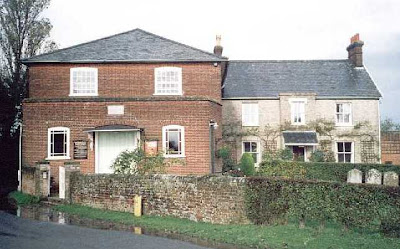We have seen that, whilst the Scottish dissenters and their English allies campaigned vigorously for Scottish disestablishment (an ultimately fruitless campaign that would last the best part of a century and conclude in failure), the Church of Scotland interpreted the campaign as an attack motivated by sectarian feelings of antipathy to themselves. Coming when it did, it practically cut off Church of Scotland and Free church evangelicals from one another.
With the growth of Scotland's population, especially in the cities, the old Parish system was no longer adequate. Urban parishes were hugely overpopulated and insufficiently supplied with church seatings. Ministers were faced with a parish population too vast to oversee. To supply the need 'chapels of ease' had been built, usually with private funds. These were church buildings without parishes and therefore without elders and the machinery of a parish. This was of course far from ideal, and so Thomas Chalmers and the Evangelical leaders in the Church Of Scotland sought the creation of new parishes.
The Voluntary Associations fought against this measure, which would have involved the government endowing these new parishes. From their side the opposition seems understandable until we realise that the end of these new parishes would have been the better evangelization of the urban poor. At the same time most of these ministers were evangelicals and supporters of Thomas Chalmers. Thus the measure to endow the chapels of ease and transform them into full churches was ironically defeated by a combination of evangelical nonconformists and non-evangelical Churchmen.
Thus the evangelical nonconformists, rather than backing Chalmers, actually contributed to the Disruption of the Church of Scotland in 1843 by ensuring that many of Chalmers' supporters were not entitled to a vote in the General Assembly. Ironically the measure passed anyway a few years down the line. The Voluntaries had more zeal than discretion. They never learned to pick their battles, a fact that would eventually turn Scotland against them and ensure defeat in 1929.
One cause that was seen as a real burden by Voluntaries, and that was a battle worth fighting, was the Edinburgh Annuity Tax. This was a tax levied in Edinburgh for the support of the city's Church of Scotland ministry, and many nonconformists though, quite reasonably in our view, that it was highly unfair to tax them to support a ministry that they did not attend on. It was a tax paid by the occupiers of houses within the Royalty, amounting to six per cent. on rental. Lawyers were exempted, but all others, including dissenting ministers, were expected to pay it. The tax supported eighteen ministers in thirteen churches. Some were evangelicals, some were not.
In 1835 John Brown moved inside the Royalty. At first he paid the tax, whilst protesting about the existence of such a tax in the letter column of the
Scotsman newspaper. In 1837, however, he changed his mind about the rightness of paying the tax. As a Voluntary he objected to paying a tax specifically for religious purposes. The members of the Edinburgh Church of Scotland congregations were, in his view, responsible for supporting their ministers. He sought the abolition of this tax, and he thought that passive resistance had failed.
Surprisingly Dr. Brown was opposed not by a Church of Scotland minister (this was at the height of the Ten Years' Conflict) but by Robert Haldane, a Baptist and a fellow nonconformist. Haldane himself disapproved of the tax and was a voluntary. Where he disagreed with Dr. Brown was on the non-payment. What Brown's reason for non-payment came down to, Haldane pointed out, was that he disagreed with the tax. Would he then approve of others not paying taxes simply because they disapproved of them? Was it not more Christian to bear with protest the Annuity-Tax rather than to thus rebel against the government by non-payment? He called attention to Romans 13 and the injunction to be subject to the powers that be.
Brown responded in two lectures in which he said that in his opinion Romans 13 only applied to obedience to the magistrate as long as he acted lawfully. Since the Annuity-Tax was unbiblical, it did not come under the injunctions of Romans 13. Furthermore Romans 13 was only telling Christians to remain submissive under a despotism and did not apply under a democracy.
what was still more unfortunate was his comparison of the Annuity-Tax with ancient taxes that supported idolatry, for people easily concluded that Brown was accusing the Church of Scotland of idolatry.
There is a serious question here: is it right for a Christian to withhold payment of a tax or part of a tax that he holds to be going for sinful purposes? Leaving aside the question of whether or not the support of a state church is sinful, what of supporting an educational system that promotes atheism, paganism and immorality?
God willing, next time we shall conclude this brief treatment of the controversy
Labels: John Brown Broughton Place





